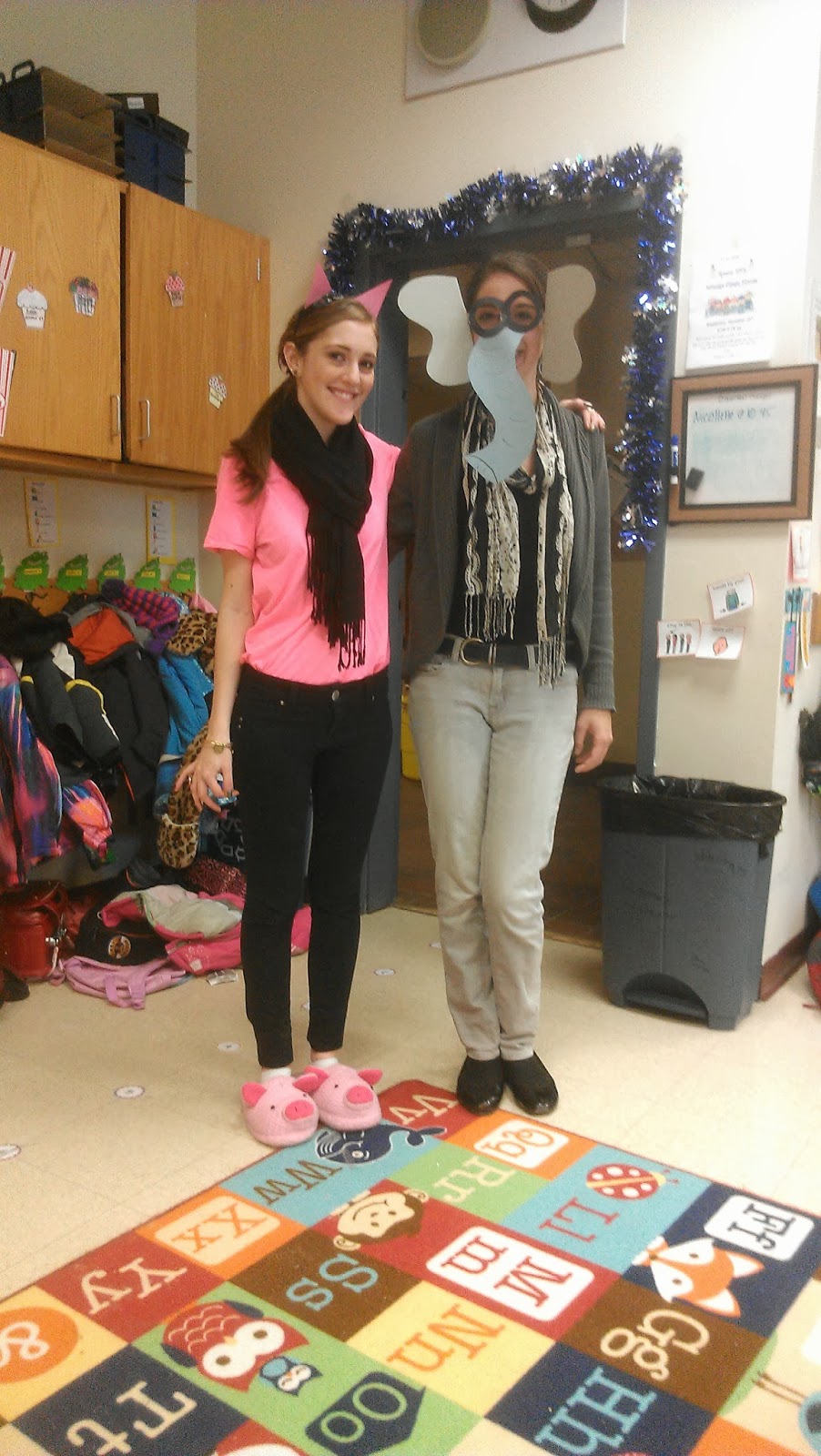Reader’s and Writer’s Workshop
It is crucial for beginning and emerging readers to have strategies when they come to an unknown word. Students learned and practiced various decoding strategies. These strategies were sent home during conferences.
As student have spent the first few months of school avidly learning how to pick out “just right” books for independent reading, our themed library (also known as Pug Corner) was opened up to book shoppers. We had a class discussion about having a variety of books in your book bin and not all books from the same genre, topic, author etc. Students were very excited to have the liberty to pick books about topics of choice. It is important as first graders’ reading skills develop that they are becoming responsible and aware readers. Learning how to pick out a “just right” book is a challenging skill. Independent reading level means a child can read most/all of the words, is fluent and understands what he/she is reading.

We began four Literacy Centers. Literacy Centers are an opportunity for students to work independently or in pairs to have practice and enrichment for literacy skills being taught in the classroom. As it takes time to establish expectations and routines, students were exposed to four centers so far.
Read to a Pug on a Rug (independent reading to a stuffed animal)
Poetry Station
Buddy Reading
Word Wizard
We worked hard on the Super Sentence unit across subject areas. While we continued to focus on simple sentences and conventions, we also dove into the parts of speech. Students worked in groups to sort nouns into different categories and think of their own.
A noun is a person, place, or thing. The “who or what?” in a sentence.
An adjective is a describing word. The word that describes the noun in a sentence.
A verb is an action word. The “did what?” in a sentence.
Students enjoyed thinking of adjectives that describe one another and sharing their work. We read the silly book, The Things That Are Most in the World by Judi Barrett. This book exposed students to funny adjectives describing outlandish situations. Students got creative and wrote their own page for a class book (black and white copies were sent home).
A highlight of the past couple of weeks was the verb game. Students secretly chose a verb, had to act out the verb and find the other person in the class that was acting out the same verb. The class then had to guess which verb the buddies were acting out. The kids had a blast and begged to keep playing!
 |
| hop |
 |
| sleep |
 |
| dig |
(students not pictured were absent or did not want a photo taken)
Fundations

Students
learned about common consonant digraphs: two consonants that make one sound.
ch, sh,
wh, th, ck
We had a
lot of fun learning about digraphs by meeting the H Brothers…don’t forget their
friend Rick!
Charles in the crazy brother! Charles just loves trains. He walks around town saying “choo-choo”
Then there
is Sherman. Poor Sherman! He is the quiet brother and Charles drives him crazy! He always tells people to “sh!”
Whit is the musical brother. Whit wants to whistle so badly, but he just doesn’t know how. When he tries it sounds like “wh.”
Theo is the impolite brother. He always sticks his tongue out at
people and it sounds like “th.” Even though Theo is rude, he really helped us
remember the “th”
sound! We tried to make the “th” sound with our tongues in our
mouths and it was impossible.
Rick is the H Brother’s friend and he is
always last in line. Just like “ck”
always comes at the end of the word!
Math
Students
in room 101 are continuing to learn how to see the many possible
interpretations of a subtraction equation. This is achieved by
experiencing numerous hands-on and visually appealing lessons focused on
interpreting an equation such as 8 - 5 = 3 in the following representations:
1.
Missing Part:
I
have 8 pencils. If 5 are on top of my desk, how many are inside?
2.
Taking away from a whole:
I had 8 pencils. I gave my sister 5. How many do I
have left?
3. Comparing Quantities:
I have 8 pencils. My brother has 5 pencils. How many
more do I have?
We spent the past 2 weeks focusing on Comparing quantities,
solving all different types of subtraction story problems, writing number
sentences to solve a problem, using manipulatives to solve a problem and seeing
the relationship between addition and subtraction.
To conclude the topic, students will use counters to act out and
solve subtraction story problems.
For the next math topic, students will focus on Five and Ten
Relationships. The big ideas of
this topic are:
Number Uses, Classification, and Representation
Equivalence
Operation Meanings and Relationships
Practices, Processes, and Proficiencies
Understanding number relationships is the basics for
understanding ideas about numbers and operations. The relationship of numbers to five and ten are particularly
useful in thinking about various combinations of numbers.
Think about the number 7…
The number 7 can be thought of as “5 and 2 more” and the number 7 can be thought of as “3 away from 10”
Thinking of the number 7 in these ways, can help answer 5+2,
7-5, 7-2, and 7+3. In later
grades, similar relationships can be used to mentally compute with greater
numbers.
Numbers can be used for different purposes, and numbers can be
classified and represented in different ways. After the Thanksgiving Break students will focus on Number
Uses, Classification, and Representation. Students will accomplish this goal by using a
ten-frame.
Mystery
Readers





